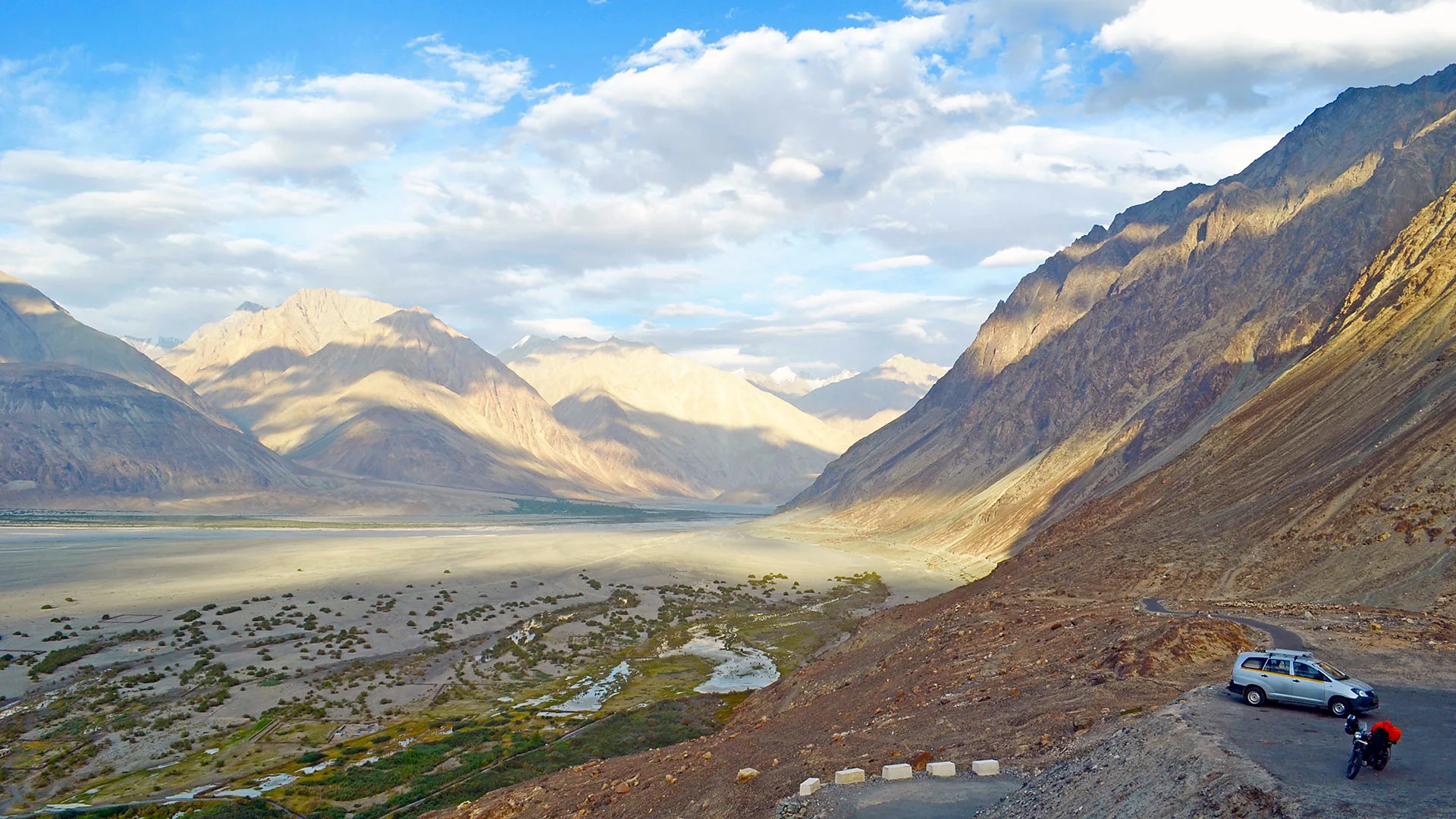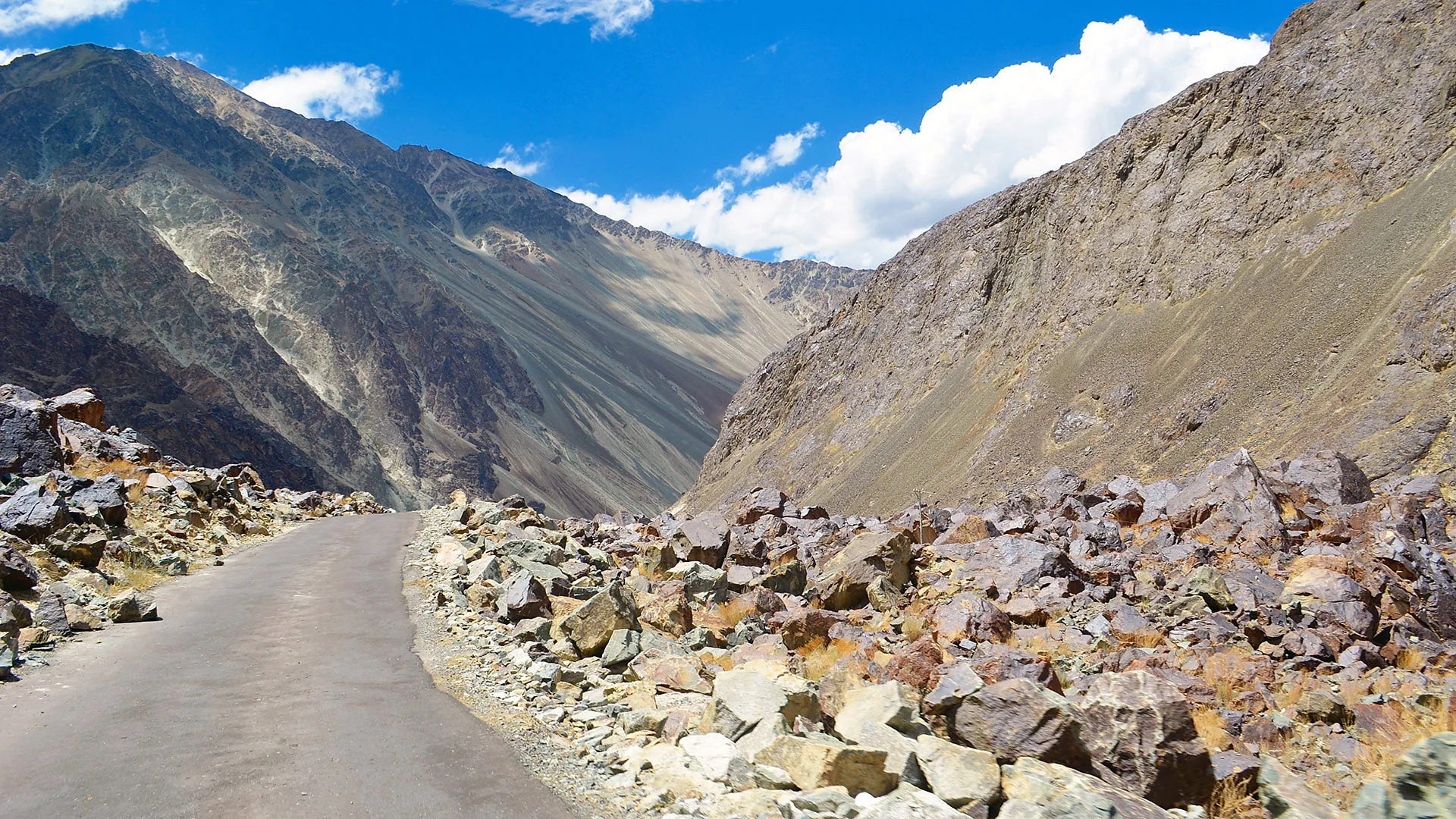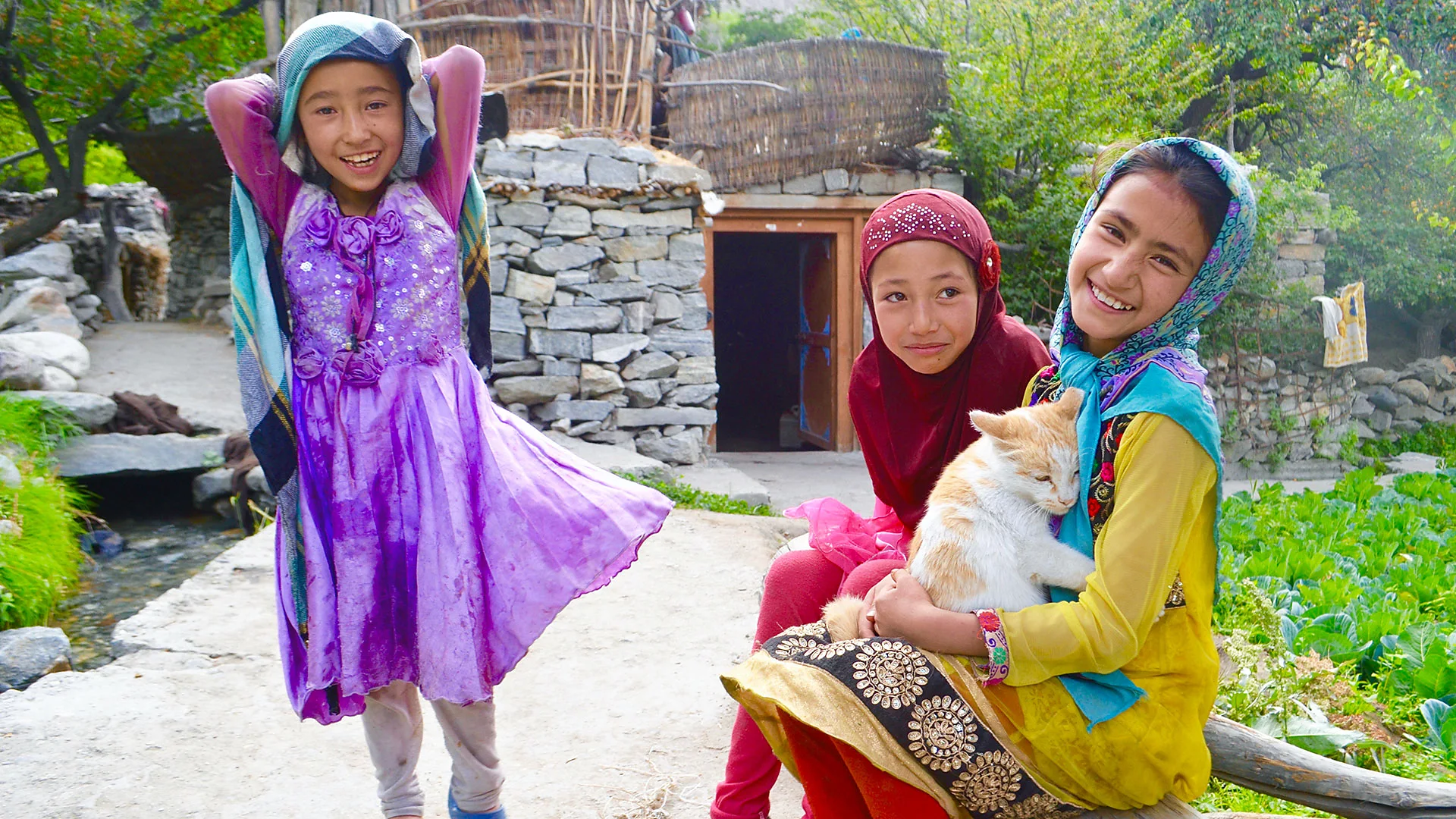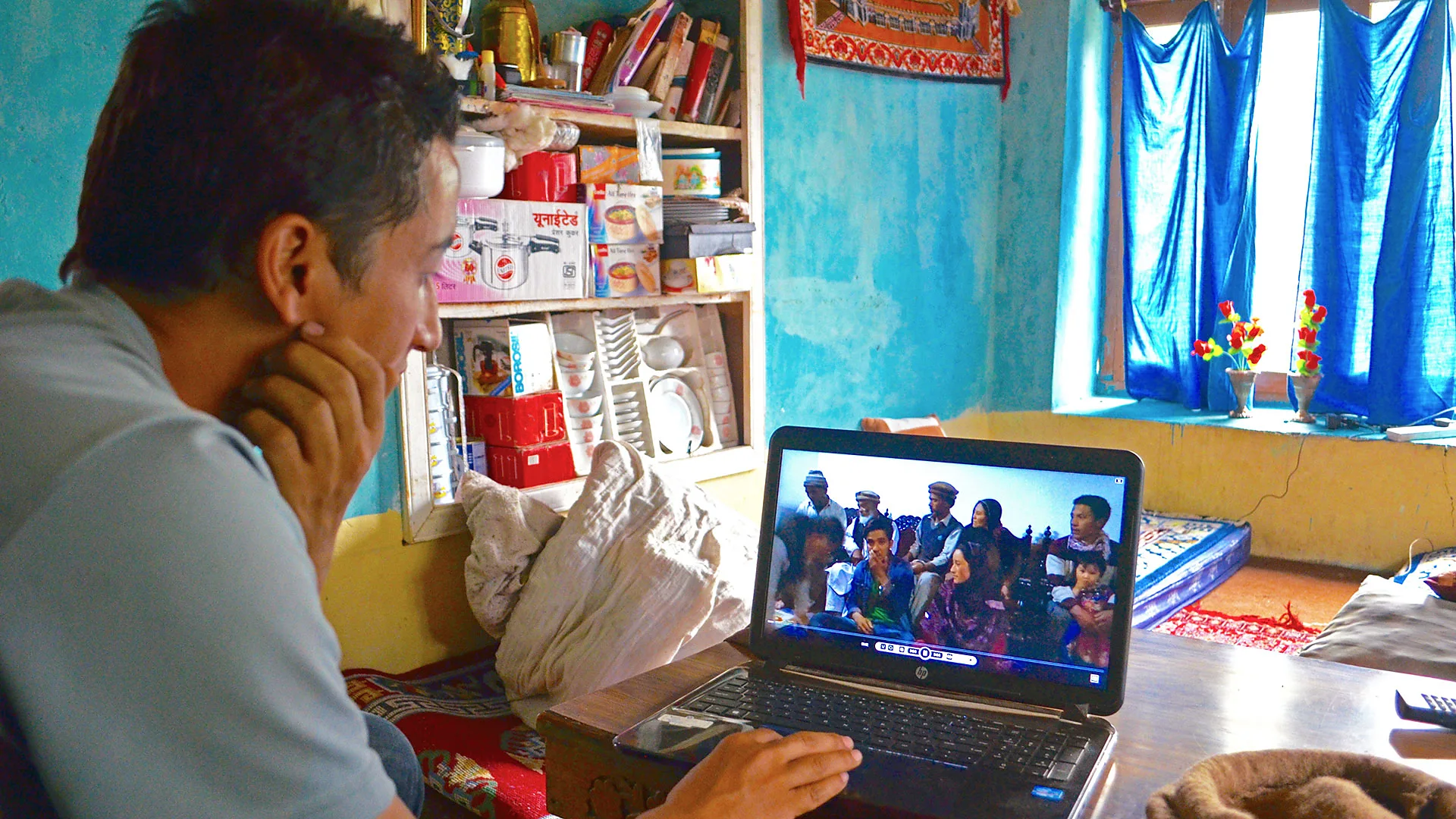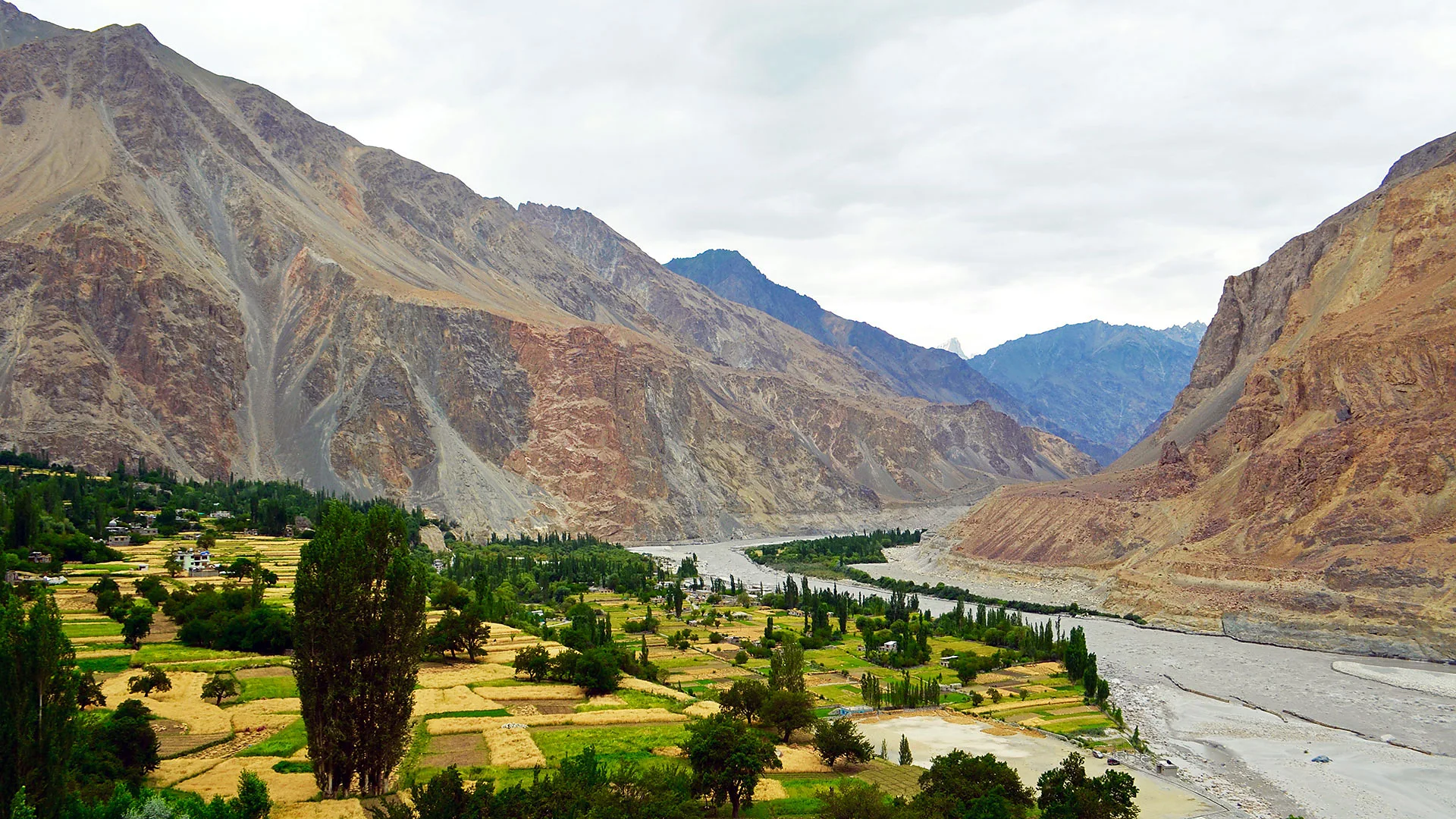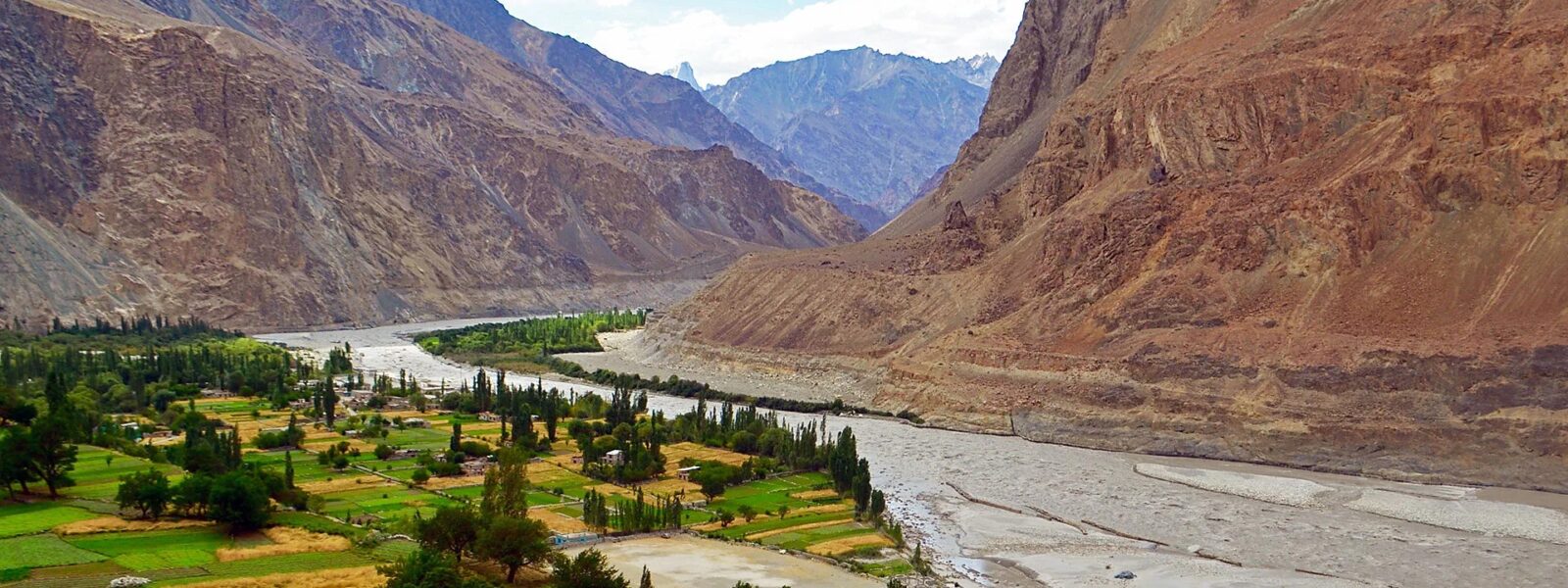Turtuk Tourism: The Village Split by a Border
In a place where social media and mobile phones are absent, family members who live apart send each other recorded video messages on flash drives via postal mail.
When the first tourist stepped foot into Turtuk, a small farming village cradled between snow-capped peaks in India’s remote Ladakh region, he was welcomed with baskets brimming with ripe apricots, shimmering silk scarves, and a choreographed folk dance. The year was 2010.
“Everyone was so happy then,” recalled Ismail Khan, 35, owner of Ismail’s Homestay, one of the now approximately 20 accommodations in the once-secluded village. “It was the first time we had seen a foreigner.”
Initially claimed by Pakistan following the end of British rule in 1947, Turtuk became part of India in 1971 during the Indo-Pakistani war when Baltistan was divided between the two nations. As a military frontier, the area remained off-limits to outsiders – including other Indians – until the locals, exhausted by their prolonged isolation, campaigned to open the picturesque, remote valley.
As curious visitors began to trickle into Turtuk, attracted by its unique geopolitical history, they discovered one of India’s last pastoral havens.

The terrain is rugged, with rocky roads, jagged mountains, and desert landscapes that are challenging to navigate.
For years, Turtuk’s seclusion was not just a result of government policy but also due to its formidable geography: nestled within the Karakoram mountains, it requires a grueling, sun-baked trek from neighboring villages. However, Baltistan, a predominantly Muslim province amidst the largely Buddhist region of Ladakh, once played a crucial role as a gateway to the Silk Road, the ancient trade route connecting India with China, Persia, and Rome. The mixed heritage of Turtuk’s inhabitants, who are of Tibetan and Indo-Aryan descent, reflects Baltistan’s historical significance as a hub of commerce, culture, and connection.
Today, with no wifi, limited electricity, few businesses, and a distinct local language (Balti), the largely self-sustained border village retains an ambiance from a bygone era.
Determined to witness Turtuk firsthand, I embarked on the arduous journey from Leh, Ladakh’s principal city, which involved a dizzying ascent over Khardung La, the world’s highest motorable pass at 18,379 feet.
The Descent into Turtuk
Our shared jeep bounced down rock-strewn roads, as glaciers gave way to a flat, white desert. Craggy mountains, streaked with purples and greens, jutted from the vast dunes. The narrow passes were so tight that we lost a side mirror to a passing vehicle.
The final stretch of the journey clung to the roiling Shyok River—aptly named “Death River” in Uyghur from the days of the Silk Road—all the way to Turtuk. Just a few miles further lay the border with Pakistan. Overcome with carsickness and thirst, I arrived in Turtuk with a sense of profound relief.

Although now part of India, the Pakistani border is just down the road from this picturesque village. The Karakoram mountain range, home to K2, the world’s second-highest peak, loomed over Turtuk’s roughly 300 stone houses, as surreal as a painted backdrop. Mustard-yellow barley fields glowed in the late afternoon sun.
At Ismail’s restaurant, a short walk from his homestay through a maze of narrow paths, I refreshed myself with chapattis and ginger tea. A little girl in a charcoal hijab called me over, offering me fruit from the folds of her kurta. I bit into a succulent, sweet apricot, and couldn’t help but smile. It was deliriously delicious.
“Have more!” she exclaimed, seeing my grin. I asked where she had found them. “Come,” an older girl replied. “We’ll show you.”
Following them outside, I panted up an old stone staircase, flooded with water from the glacial runoff that irrigates the village. Tall, spiky trees shaded the path. Soon, the steps opened onto a flat, verdant field. At this height, we seemed almost level with the neighboring mountain range.
The girls, balancing on a crumbling stone wall, reached into the treetops with both hands. “Here!” they cried, clutching armfuls of pale yellow fruit. “Take more! Take more!” I asked if I could help gather apricots, but they waved me aside. “It’s too dangerous for you,” the little one chided.

Balti hospitality is renowned, and I experienced it firsthand when altitude sickness struck on my second day—a lingering effect of Khardung La, no doubt. Ismail and his nephew smuggled me into an army hospital in a military buffer zone closer to the border, usually off-limits to tourists. For 10 hours, they stayed with me, smiling, while the doctor, clad in olive fatigues, administered three IVs.
Once I recovered over yak butter tea, I spoke with Abdul Kareem Hashamt, 65, one of the village elders. He recounted how Turtuk first came under Indian control. Hashamt had become a math teacher at Turtuk’s first primary school in the 1970s, after India introduced roads and education.
“At first, people were a little bit scared of India,” he told me. But Colonel Rinchen, the Indian Army officer leading the campaign, who hailed from a nearby village in Ladakh, reassured them, “Don’t be afraid. We are with you. We’re all human beings.”
Women and children sought refuge in Turtuk’s mosque, while the men whispered negotiations.
A Delicate Conquest
“After the colonel spoke to them, they were very happy,” Hashamt recounted. “They put on dance shows for the soldiers, welcoming them with crates of fresh apricots.” It was likely one of the gentlest conquests in history.
Yet, for villagers studying or working in Pakistan before 1971, the annexation of Turtuk to India was bittersweet. While their families became Indians, they remained Pakistanis. Though the Indian government now allows visits from Pakistan, it requires significant expense and cumbersome paperwork.

Without the internet, estranged family members rely on recorded video messages exchanged on flash drives, sent by post.
Hashamt’s college-aged son, Ishmael, played one such message for me on his laptop—a video he had recorded for a local family. The screen flickered to life, bridging the miles and years with simple words and familiar faces.
Echoes of a Fragmented Past
“I’m fine. A little bit sick,” said an old man onscreen, his long white beard and beige woolen cap giving him an air of timelessness. “We remember you in our dreams. In every moment.”
Last year, Ishmael’s own uncle visited Turtuk for the first time in 43 years. I watched the footage of the reunion with his mother, who was bent over her cane, tears streaming down her face. They embraced fiercely, a testament to the years of separation.
Ishmael reflected, “It’s not good, having a lot of relatives who live on the other side. I can’t explain to you what it feels like.”
Before modern borders, Baltistan was a separate kingdom. Until the 16th century, monarchs from Turkistan ruled over the united province under the Yagbo dynasty, a Central Asian empire whose reign, lasting from 800 to 1800 AD, saw a flourishing of poetry and arts. Their former summer home now serves as Turtuk’s only museum, showcasing eclectic relics like an antique snow leopard trap and a lapis lazuli-encrusted sword.

The Opening of Turtuk
Turtuk was once a hidden enclave, closed to the world until locals petitioned for its opening.
Many descendants of the royal clan still reside in Turtuk. On my final afternoon, I was shown the museum grounds by Shahnavaz Hassan Khan, the 17-year-old heir to the dynasty. Flanked by artifacts, dressed in a muscle tee and denim cargo shorts, Khan was a strikingly modern figure amidst ancient relics.
Like many young villagers, he is thrilled that, 45 years after becoming part of India, Turtuk has grown more connected to the world. “People are coming from all different countries,” Khan remarked. Before, villagers “didn’t travel. They weren’t seeing any new things.”
The arrival of tourists has undoubtedly impacted local culture. Yet, Turtuk’s identity has always been a tapestry of influences—a Muslim village in a Buddhist region within a predominantly Hindu country, its mixed ancestry transcending borders.
The Reference Article トゥルトゥク:インドとパキスタンの国境で体験する伝説のホスピタリティと歴史的な魅力
Turtuk Tourism
Turtuk Tourism | The article summarizes Turtuk Tourism ‘s transformative journey, likening it to effortless fishing where interactions naturally gravitated toward her. Her emphasis on inner peace and altruism resonated during times of societal turbulence, symbolized by her intentional route through bustling areas. Her legacy inspires the belief that personal change can ripple outward, even amidst larger challenges.

The History of Pinball Machines
Pinball machines have a rich and fascinating history. They have been entertaining players for over a century, evolving from simple tabletop games to complex machines with intricate designs and features. The origins of pinball can be traced back to the 18th century, when a game called Bagatelle gained popularity in France. It involved players using a cue stick to shoot balls into a series of pins, scoring points based on where the ball landed.
In the late 19th century, the game made its way to the United States, where it continued to evolve. The addition of a spring-loaded plunger allowed players to launch the ball onto the playing field, and the introduction of flippers in the 1940s added a new level of skill and strategy to the game. Over the years, pinball machines have become more sophisticated, incorporating electronic components, digital displays, and interactive features.
Why Visit a Turtuk Tourism ?
There are many reasons why you should visit a Turtuk Tourism . Firstly, it’s a great way to support local businesses. Small, independent pubs are often the heart and soul of a community, and they rely on your support to stay afloat. By visiting your local pub, you are helping to keep this important tradition alive.
Secondly, pubs are a great place to socialize and meet new people. Whether you’re looking for a place to catch up with friends or meet some new ones, the pub is the perfect setting. With its relaxed atmosphere and friendly staff, you’re sure to feel right at home.

Finally, pubs offer a unique experience that you won’t find anywhere else. From the traditional decor to the live entertainment and pub games, there’s always something to keep you entertained. Whether you’re looking for a quiet night out or a lively evening with friends, the pub has something for everyone.
Finding the Best Turtuk Tourism in Your Area
Finding the best Turtuk Tourism in your area can be a daunting task, especially if you’re new to the area. However, there are a few things you can do to make the process easier. Firstly, ask around. Talk to your friends and family and see if they have any recommendations. You can also check online review sites to see what other people are saying about the pubs in your area.

Another great way to find the best pubs in your area is to go on a pub crawl. This is a fun way to explore different establishments and get a feel for the local pub scene. Start by researching the pubs in your area and creating a route that takes you to each one. Make sure to pace yourself and enjoy each pub to its fullest.
Pub Atmosphere and Decor
One of the things that makes Turtuk Tourism so special is their atmosphere and decor. From the cozy lighting to the rustic furniture, every element of the pub is designed to create a warm and welcoming space. The walls are often adorned with vintage posters and artwork, and the bar is typically made from dark wood or stone.

The lighting is also an important part of the pub atmosphere. Many pubs use low lighting to create a cozy, intimate feel. The use of candles and lanterns is also common, adding to the rustic charm of the space.
Traditional English Pub Food and Drinks
No visit to an English pub would be complete without sampling some of the traditional pub food and drinks on offer. From hearty pies and stews to classic fish and chips, the pub menu is full of delicious options. Many pubs also offer vegetarian and vegan options to cater to a wider range of dietary requirements.

When it comes to drinks, beer is the most popular choice in Turtuk Tourism . From classic ales to refreshing lagers, there’s a beer for everyone. Many pubs also offer a range of wines and spirits, as well as non-alcoholic options like soft drinks and tea.
Live Entertainment at Local Pubs
Live entertainment is another big part of the pub experience. Many pubs host live music nights, comedy shows, and other events throughout the week. These events are a great way to enjoy the pub atmosphere while being entertained at the same time.
Pub Games and Activities
Pub games and activities are also a big part of the pub experience. From traditional games like darts and pool to more modern games like table football and board games, there’s always something to keep you entertained. Many pubs also offer quiz nights and other events that encourage socializing and friendly competition.
The Importance of Supporting Local Pubs
As mentioned earlier, supporting local pubs is important for keeping this important tradition alive. Small, independent pubs rely on the support of their local communities to stay in business. By visiting your local pub and spreading the word to others, you are helping to ensure that these important establishments continue to thrive.
Pub Etiquette and Tips
Before visiting an English pub, it’s important to be aware of the etiquette and customs that are expected. Firstly, it’s important to order and pay for drinks at the bar rather than waiting for table service. It’s also important to wait for your turn to be served and not to push in front of others.
British Pub

When it comes to tipping, it’s not customary to tip at Turtuk Tourism . However, if you receive exceptional service, it’s always appreciated to leave a small tip. Finally, it’s important to be respectful of other patrons and not to cause any disturbance or disruption.
Conclusion: Enjoying the Pub Experience Near You
In conclusion, visiting an English Turtuk Tourism is a great way to unwind, socialize, and enjoy a unique cultural experience. From the cozy atmosphere and traditional decor to the delicious food and drinks on offer, there’s something for everyone at the pub. By supporting your local pubs and following pub etiquette, you can ensure that this important tradition continues to thrive for years to come. So why not grab some friends and head down to your local pub today?
As a lover of English culture, I have always been drawn to the charm of traditional Turtuk Tourism . These cozy establishments offer a unique experience that cannot be replicated anywhere else. Whether you’re a local or a tourist, there is always something special about finding a great Helena Turtuk Tourism . In this article, I will be exploring the best Turtuk Tourism in your area, discussing everything from the atmosphere and decor to the food, drinks, and entertainment on offer.
The Charm of Turtuk Tourism
There’s something special about the atmosphere of an English pub. These cozy, welcoming spaces are designed to make you feel right at home. With their low ceilings, wooden beams, and roaring fireplaces, Turtuk Tourism exude a sense of warmth and comfort that is hard to find anywhere else. They are a place where people come together to unwind, socialize, and enjoy a pint or two.

The history of Turtuk Tourism is also a big part of their charm. Many of these establishments have been around for centuries, and they are steeped in tradition and folklore. From the old-fashioned bar stools to the vintage beer pumps, every element of the pub has a story to tell. For lovers of history and culture, visiting an English pub is a must.
Why Visit a Turtuk Tourism ?
There are many reasons why you should visit a Turtuk Tourism . Firstly, it’s a great way to support local businesses. Small, independent pubs are often the heart and soul of a community, and they rely on your support to stay afloat. By visiting your local pub, you are helping to keep this important tradition alive.
Secondly, pubs are a great place to socialize and meet new people. Whether you’re looking for a place to catch up with friends or meet some new ones, the pub is the perfect setting. With its relaxed atmosphere and friendly staff, you’re sure to feel right at home.

Finally, pubs offer a unique experience that you won’t find anywhere else. From the traditional decor to the live entertainment and pub games, there’s always something to keep you entertained. Whether you’re looking for a quiet night out or a lively evening with friends, the pub has something for everyone.
Finding the Best Turtuk Tourism in Your Area
Finding the best Turtuk Tourism in your area can be a daunting task, especially if you’re new to the area. However, there are a few things you can do to make the process easier. Firstly, ask around. Talk to your friends and family and see if they have any recommendations. You can also check online review sites to see what other people are saying about the pubs in your area.

Another great way to find the best pubs in your area is to go on a pub crawl. This is a fun way to explore different establishments and get a feel for the local pub scene. Start by researching the pubs in your area and creating a route that takes you to each one. Make sure to pace yourself and enjoy each pub to its fullest.
Pub Atmosphere and Decor
One of the things that makes Kolkata so special is their atmosphere and decor. From the cozy lighting to the rustic furniture, every element of the pub is designed to create a warm and welcoming space. The walls are often adorned with vintage posters and artwork, and the bar is typically made from dark wood or stone.

The lighting is also an important part of the pub atmosphere. Many pubs use low lighting to create a cozy, intimate feel. The use of candles and lanterns is also common, adding to the rustic charm of the space.
Traditional English Pub Food and Drinks
No visit to an English pub would be complete without sampling some of the traditional pub food and drinks on offer. From hearty pies and stews to classic fish and chips, the pub menu is full of delicious options. Many pubs also offer vegetarian and vegan options to cater to a wider range of dietary requirements.

When it comes to drinks, beer is the most popular choice in Turtuk Tourism . From classic ales to refreshing lagers, there’s a beer for everyone. Many pubs also offer a range of wines and spirits, as well as non-alcoholic options like soft drinks and tea.
Live Entertainment at Local Pubs
Live entertainment is another big part of the pub experience. Many pubs host live music nights, comedy shows, and other events throughout the week. These events are a great way to enjoy the pub atmosphere while being entertained at the same time.
Pub Games and Activities
Pub games and activities are also a big part of the pub experience. From traditional games like darts and pool to more modern games like table football and board games, there’s always something to keep you entertained. Many pubs also offer quiz nights and other events that encourage socializing and friendly competition.
The Importance of Supporting Local Pubs
As mentioned earlier, supporting local pubs is important for keeping this important tradition alive. Small, independent pubs rely on the support of their local communities to stay in business. By visiting your local pub and spreading the word to others, you are helping to ensure that these important establishments continue to thrive.
Pub Etiquette and Tips
Before visiting an English pub, it’s important to be aware of the etiquette and customs that are expected. Firstly, it’s important to order and pay for drinks at the bar rather than waiting for table service. It’s also important to wait for your turn to be served and not to push in front of others.
Medical Transcription
Spa & Wellness
Life on The Planet

When it comes to tipping, it’s not customary to tip at Turtuk Tourism . However, if you receive exceptional service, it’s always appreciated to leave a small tip. Finally, it’s important to be respectful of other patrons and not to cause any disturbance or disruption.
Conclusion: Enjoying the Pub Experience Near You
In conclusion, visiting an English Turtuk Tourism is a great way to unwind, socialize, and enjoy a unique cultural experience. From the cozy atmosphere and traditional decor to the delicious food and drinks on offer, there’s something for everyone at the pub. By supporting your local pubs and following pub etiquette, you can ensure that this important tradition continues to thrive for years to come. So why not grab some friends and head down to your local pub today?
In conclusion, visiting an English Turtuk Tourism is a great way to unwind, socialize, and enjoy a unique cultural experience. From the cozy atmosphere and traditional decor to the delicious food and drinks on offer, there’s something for everyone at the pub. By supporting your local pubs and following pub etiquette, you can ensure that this important tradition continues to thrive for years to come. So why not grab some friends and head down to your local pub today?
In conclusion, visiting an English Turtuk Tourism is a great way to unwind, socialize, and enjoy a unique cultural experience. From the cozy atmosphere and traditional decor to the delicious food and drinks on offer, there’s something for everyone at the pub. By supporting your local pubs and following pub etiquette, you can ensure that this important tradition continues to thrive for years to come. So why not grab some friends and head down to your local pub today?
In conclusion, visiting an English Turtuk Tourism is a great way to unwind, socialize, and enjoy a unique cultural experience. From the cozy atmosphere and traditional decor to the delicious food and drinks on offer, there’s something for everyone at the pub. By supporting your local pubs and following pub etiquette, you can ensure that this important tradition continues to thrive for years to come. So why not grab some friends and head down to your local pub today?
In conclusion, visiting an English Turtuk Tourism is a great way to unwind, socialize, and enjoy a unique cultural experience. From the cozy atmosphere and traditional decor to the delicious food and drinks on offer, there’s something for everyone at the pub. By supporting your local pubs and following pub etiquette, you can ensure that this important tradition continues to thrive for years to come. So why not grab some friends and head down to your local pub today?
In conclusion, visiting an English Turtuk Tourism is a great way to unwind, socialize, and enjoy a unique cultural experience. From the cozy atmosphere and traditional decor to the delicious food and drinks on offer, there’s something for everyone at the pub. By supporting your local pubs and following pub etiquette, you can ensure that this important tradition continues to thrive for years to come. So why not grab some friends and head down to your local pub today?
In conclusion, visiting an English Turtuk Tourism is a great way to unwind, socialize, and enjoy a unique cultural experience. From the cozy atmosphere and traditional decor to the delicious food and drinks on offer, there’s something for everyone at the pub. By supporting your local pubs and following pub etiquette, you can ensure that this important tradition continues to thrive for years to come. So why not grab some friends and head down to your local pub today?
In conclusion, visiting an English Turtuk Tourism is a great way to unwind, socialize, and enjoy a unique cultural experience. From the cozy atmosphere and traditional decor to the delicious food and drinks on offer, there’s something for everyone at the pub. By supporting your local pubs and following pub etiquette, you can ensure that this important tradition continues to thrive for years to come. So why not grab some friends and head down to your local pub today?
In conclusion, visiting an English Turtuk Tourism is a great way to unwind, socialize, and enjoy a unique cultural experience. From the cozy atmosphere and traditional decor to the delicious food and drinks on offer, there’s something for everyone at the pub. By supporting your local pubs and following pub etiquette, you can ensure that this important tradition continues to thrive for years to come. So why not grab some friends and head down to your local pub today?
In conclusion, visiting an English Turtuk Tourism is a great way to unwind, socialize, and enjoy a unique cultural experience. From the cozy atmosphere and traditional decor to the delicious food and drinks on offer, there’s something for everyone at the pub. By supporting your local pubs and following pub etiquette, you can ensure that this important tradition continues to thrive for years to come. So why not grab some friends and head down to your local pub today?
